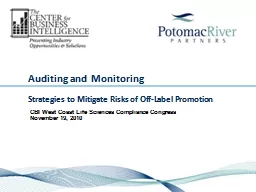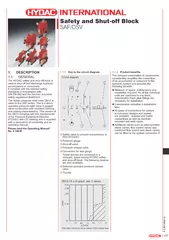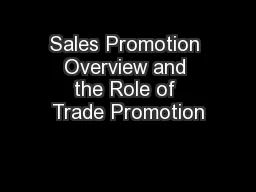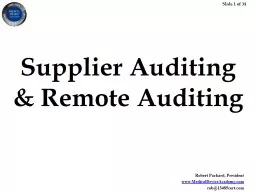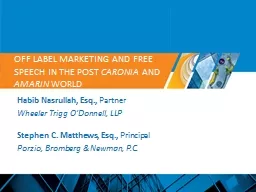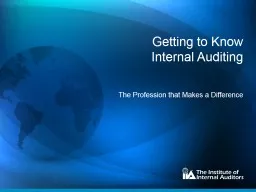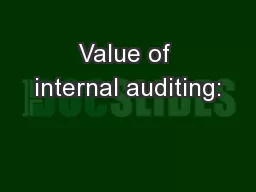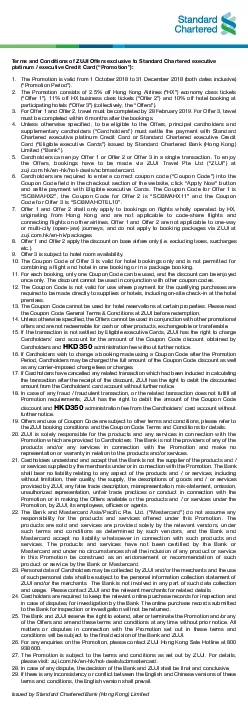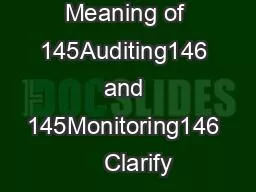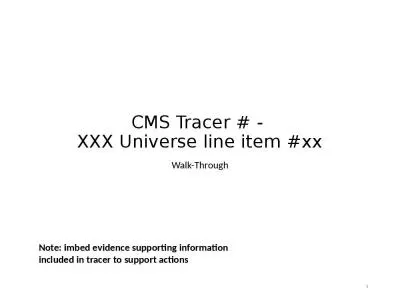PPT-Auditing and Monitoring Strategies to Mitigate Risks of Off-Label Promotion
Author : alexa-scheidler | Published Date : 2019-10-31
Auditing and Monitoring Strategies to Mitigate Risks of OffLabel Promotion CBI West Coast Life Sciences Compliance Congress November 19 2010 CIA Required Live AuditingMonitoring
Presentation Embed Code
Download Presentation
Download Presentation The PPT/PDF document "Auditing and Monitoring Strategies to M..." is the property of its rightful owner. Permission is granted to download and print the materials on this website for personal, non-commercial use only, and to display it on your personal computer provided you do not modify the materials and that you retain all copyright notices contained in the materials. By downloading content from our website, you accept the terms of this agreement.
Auditing and Monitoring Strategies to Mitigate Risks of Off-Label Promotion: Transcript
Download Rules Of Document
"Auditing and Monitoring Strategies to Mitigate Risks of Off-Label Promotion"The content belongs to its owner. You may download and print it for personal use, without modification, and keep all copyright notices. By downloading, you agree to these terms.
Related Documents

